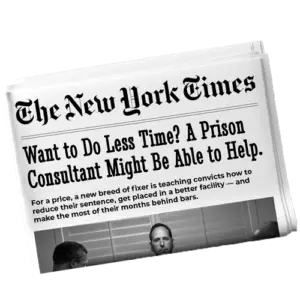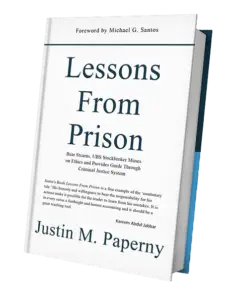This blog continues our series based on the New York Times article our work. You can read the full article [here]. Previous blogs have shown how the outcome at sentencing often reflects what the defendant did in the months (and years) leading up to it. This post is about the people who wait too long—and why that delay costs them.
Last week I got a message from someone who had just been sentenced. Three days earlier. The judge gave him 41 months.
He wanted to know what he could do now.
I didn’t sugarcoat it. I told him: “Not as much as you could’ve done a month ago. But what matters now is what you do next: how can you engineer the outcome you want moving forward?
If you want a shorter sentence or earlier release from federal prison, you have to build that case early—while you still have an opportunity to influence stakeholders.
After that hearing some doors close. The judgment is submitted. The pre-sentence report is finalized. That’s what the BOP will use to assign your designation, security level, program eligibility and it will impact whether you go straight to home confinement instead of the halfway house
They’re not going to call your lawyer. They’re not going to revisit what you wish you’d done.
They’ll look at what’s already in the record. It is simply, yet so profound.
And that’s what this man was realizing—three days too late.
I don’t say this to be harsh. I say it because I’ve been that person. When I first got sentenced to 18 months, I thought I had time. I assumed things would get figured out during my prison term. I didn’t realize how much was already decided—before I ever surrendered.
I also didn’t understand how the judge’s final words and the probation officer’s report would follow me all the way through.
If those documents say you blamed others, took shortcuts, or failed to prepare, then you’ve already told the government who you are. That message carries more weight than any apology you make later on.
Hugo Mejia, who is featured in our article, didn’t start off with a perfect plan—but he learned quickly.
He stopped relying on others to carry the message and realized everyone—the judge, prosecutor, probation officer, BOP—would be looking at the same file. He made sure that the file told a clear, consistent story that grew daily, weekly, monthly.
He started early. Months before sentencing, Hugo was writing about what he did, documenting how he was making amends, and showing—day by day—that he was taking the responsibility himself. No ghostwritten letters. No last-minute scramble. Just a steady record the judge could trust.
He was facing up to 71 months—but got 36. Not because the judge went easy on him, but because the judge had more than just the charges in front of them. Probation’s report detailed what Hugo had been doing for months—repaying victims, finishing programs, and volunteering with Prison Professors. That gave the judge a reason to lower his sentence. Without it, he likely would have served much longer.
If you’re reading this and haven’t been sentenced yet, you’re in a position that many others wish they could go back to. Don’t waste it.
If you’ve already been sentenced, there are still steps you can take—especially inside prison.
You don’t get a second chance just for asking. If you want one, you have to give the judge and the BOP a record rooted in progress not happy talk.
Every Tuesday at 11AM Pacific / 2PM Eastern, I walk through how that record gets built—and how to avoid realizing too late that the work you should’ve done never made it in. If sentencing hasn’t happened yet, you still have time. If it already has, fine. Now, like this good man who called after getting 41 months, you must engineer an outcome to get out as quickly as possible.
Justin Paperny



